There has been a lot of talk about water in space over the past few years, as astronomers hunt for water among the icy moons of the Solar System or in the atmospheres of exoplanets orbiting stars beyond our Solar System, or even closer to home on Mars and our own Moon.
Why is it that astronomers are so concerned with finding water in the Solar System, and why it is vital to our exploration of space?
All life as we know it needs water. We ourselves are made up of 55–60% water and we need a continuous supply to stay alive.
Water is also needed for daily hygiene and, if a colony beyond Earth is to be even remotely self-sustaining, for growing crops.
In this guide we'll look at where we find water in space, our Solar System, the Universe, and what makes the discovery of water beyond Earth so exciting.
First up, let's take a look at our own Moon
Water on the Moon
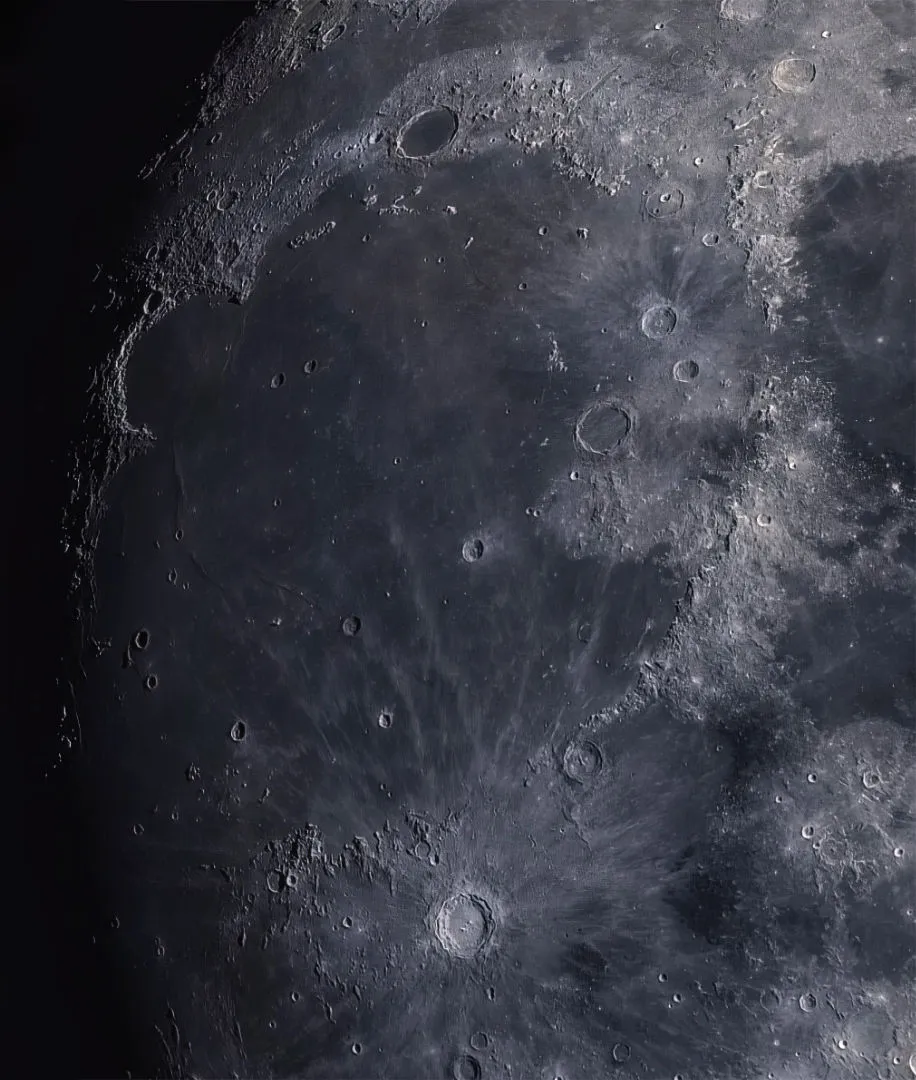
Staring up at the Moon with the naked eye, we can forgive early astronomers for assuming the dark patches spread out over its surface were seas – or ‘lunar maria’ as they were named, after the Latin word for seas.
Informed by centuries of ever-improving observations and over 60 years of space exploration, we now know the maria are not seas but rather vast expanses of volcanic basalt that erupted over the lunar surface several billion years ago.
The Moon is in fact very dry: more so than any desert on Earth.
Yet despite that, on 23 August 2023 the Indian Space Research Organisation’s Chandrayaan-3 mission successfully deployed its lander and rover near the lunar south pole in search of water.

So why search for water in such a dry location?
Although there is no liquid water on the Moon, water is present in the form of ice trapped between grains in the lunar soil and incorporated into minerals and glassy beads produced by impacts.
The potential for such hidden water was first suggested by remote observations of the surface, and later confirmed by NASA’s LCROSS mission, which in 2009 fired an empty rocket stage into a crater on the lunar surface and identified ice in the plume of material flung up from the crash site.
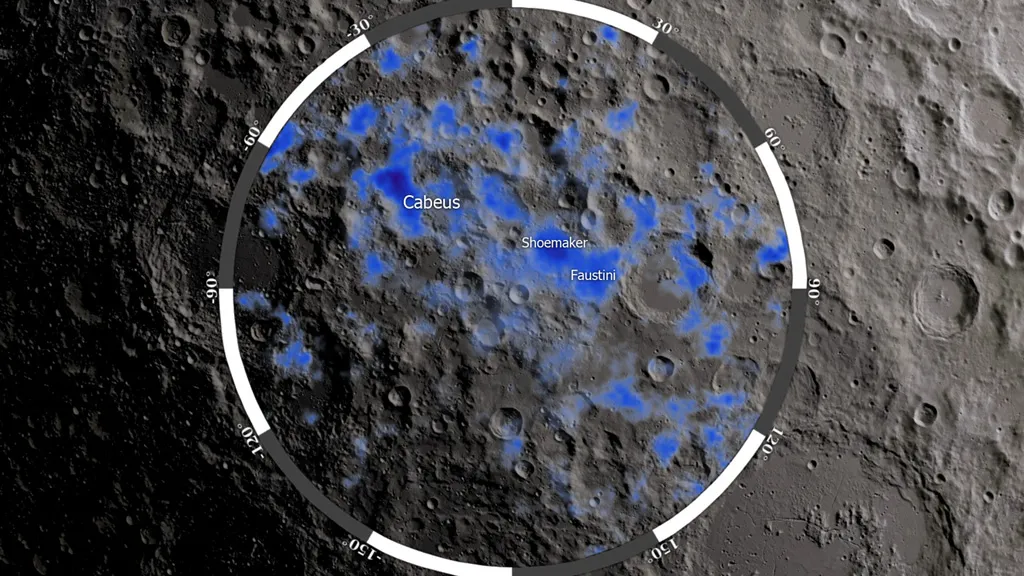
Further observations of the surface by the likes of the NASA and German Aerospace Center’s SOFIA telescope have since suggested the south polar region of the Moon in particular may host far more water than we ever imagined.
As much as 100–400mg of water (about one raindrop) may be present in each kilo of lunar soil.
While this may seem a small amount, it has prompted several space agencies to propose lunar surface missions and instruments to find and characterise lunar water over the next decade.
ESA's PROSPECT mission
One such instrument is the European Space Agency’s (ESA) PROSPECT payload, destined for the south polar region.
This consists of a drill to dig down and obtain samples from the near-surface, together with an onboard laboratory that will subject samples to heat and measure the gases, including any water vapour, that are released.
"Should water really be present in such significant quantities, the potential implications would be enormous, especially for upcoming human exploration programmes," says Dr Dave Heather, PROSPECT project scientist at ESA.
"Water is essential for human survival. It can be used for drinking and also be broken down into its constituent components to provide oxygen for breathing."
Water and space exploration
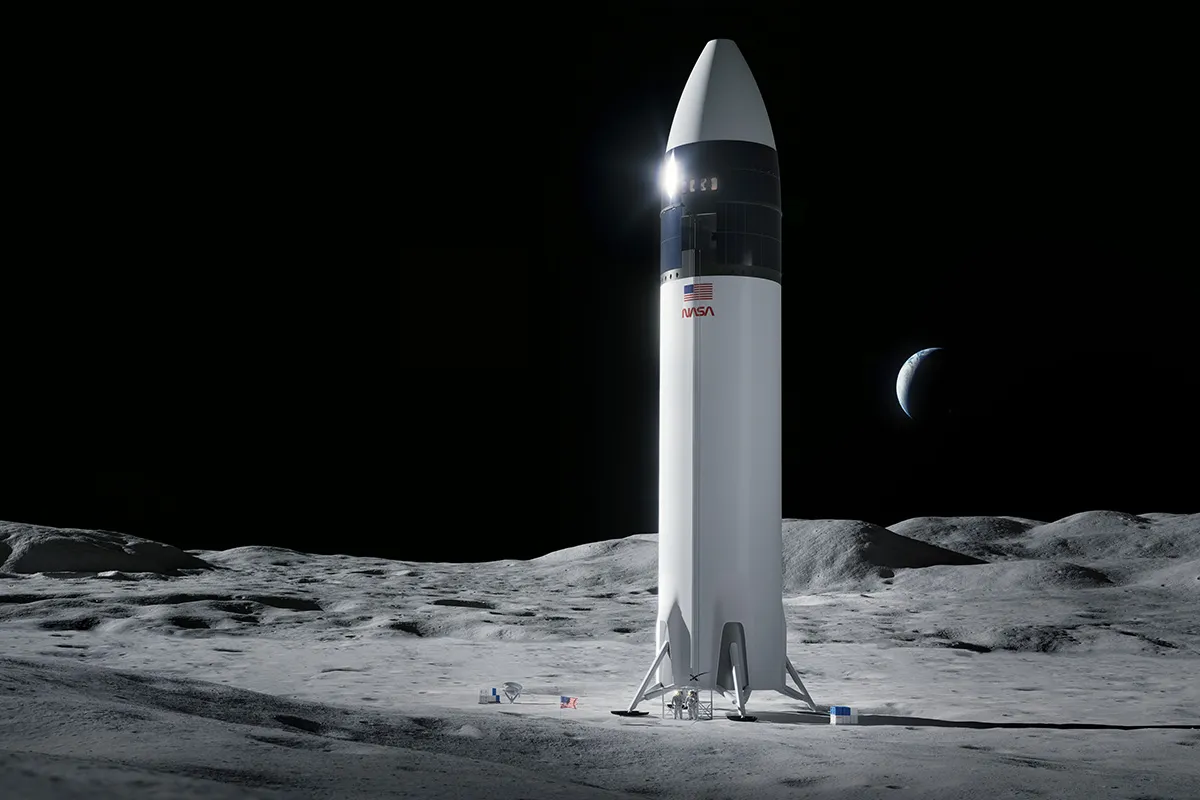
Water also has another handy use up its sleeve – if you split it into hydrogen and oxygen, you get the components for rocket fuel.
But space travel is a costly business, and one that gets more expensive and more complex the more you want to take with you and the further you want to go.
Minimising mass on board spacecraft is a high priority for space agencies and mission engineers.
Since water is vital to any human space mission, it cannot simply be left behind, but perhaps now we can mine it from lunar soils.
Dr Mahesh Anand, a professor of planetary science at the Open University, is exploring ways to do this.
"Water is considered a key resource for enabling a more affordable and sustainable exploration of the Moon," he says.
"The availability, extraction and utilisation of water in situ on the Moon would therefore lower the cost and risks for future missions."
Water in the Solar System
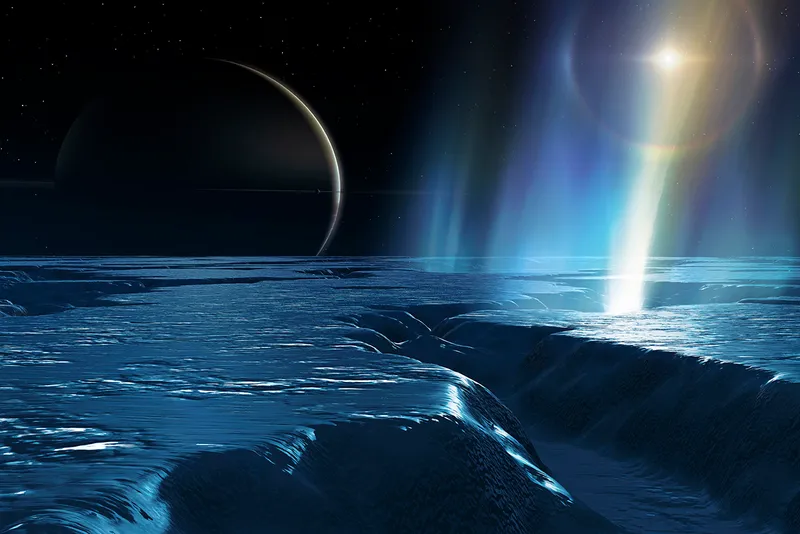
If the Moon harbours water, where else might we find it, and in what form?
Today, Earth is the only planetary body in our Solar System with sustained liquid water present on its surface.
This is because water exists as a liquid at a range of pressures and temperatures that are found, thankfully for us, on Earth’s surface.
However, over the last few decades a plethora of telescopes and spacecraft have shown that water is present throughout our Solar System.
Inner planets

We need only look as far as the other terrestrial planets, Mercury, Venus and Mars to find water.
Venus is closer to the Sun than Earth and has an extremely dense, carbon dioxide-rich atmosphere that means its surface is like an oven day and night.
You might think such a planet could not possibly host liquid water. Nevertheless, water is present on Venus, albeit only as vapour in its atmosphere.
Mercury sits even closer to the Sun than Venus, but its thin atmosphere means the surface continuously oscillates between hot and cold during the night as the planet rotates.
You might expect any water present to have boiled off completely, yet there is evidence that, just like on Earth’s Moon, water is present as ice within permanently shadowed regions of craters near Mercury’s poles.
Mars and beyond
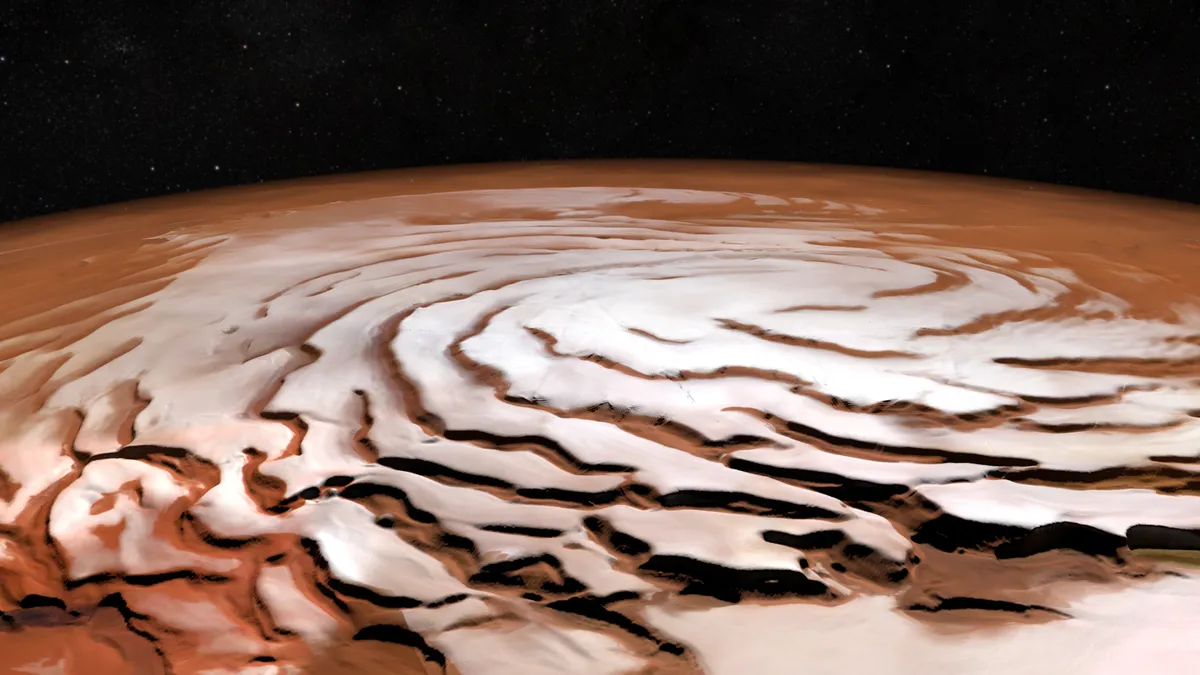
On Mars, water ice can be found in plain sight in the polar ice caps.
Yet there is also evidence of vast quantities of it – perhaps more than five million cubic kilometres – hidden beneath its surface.
If all this ice melted, there’d be enough water to create an ocean 35 metres deep over the entire surface of Mars – or fill Loch Ness over 650,000 times!
Water is also present on Mars, in small quantities, as tenuous clouds high in the atmosphere.
Near the poles, visiting Mars landers have observed water freezing out of the atmosphere at night, forming a frost on the ground.
Asteroids

Moving beyond Mars in our journey through space we reach the asteroids, which also contain water: potentially hundreds of billions of litres of the stuff.
On many asteroids this water has become incorporated into minerals, but on some, like Ceres, water is still present as ice.
Indeed, Ceres’s low density suggests that as much as 25% of the dwarf planet could be water ice.
Outer planets

At the giant planets, Saturn and Jupiter both have water vapour in their atmospheres, while Uranus and Neptune are thought to have a water ice mantle lurking beneath theirs.
Water ice also dominates the spectacular rings around Saturn, accounting for around 99% of the 15 billion billion kilos of material.
That’s over half the amount of ice currently in the Antarctic ice sheet, but spread out over a much larger area.
Perhaps more excitingly, it seems water is also present as ice on many of the moons of the giant planets, and it may even be liquid on some.
Icy moons
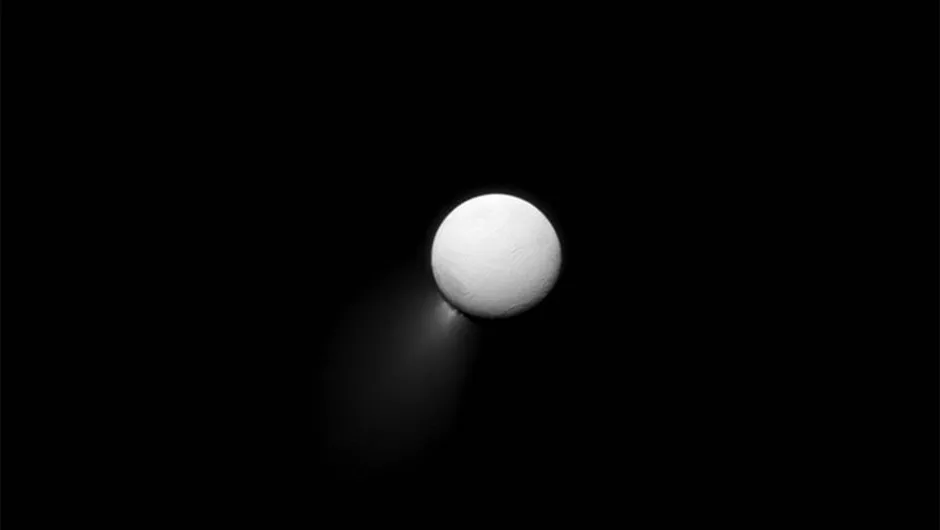
As far as we know, the only surface oceans in our Solar System are found on Earth.
However, there is evidence for subsurface oceans on at least the Jovian moons Ganymede, Callisto and Europa, and the Saturnian moons Enceladus, Dione and Titan.
Indeed, the total water content (liquid and ice) of these bodies is around 80 times that of Earth, making them prime targets for discovering and studying water in space.
While heating by the Sun at these distances is minimal, the presence of liquid subsurface oceans on these icy worlds is thought possible due to tidal heating.
Heat is generated as the moons are squashed and squeezed by the gravitational pull of their parent planet fighting against that of their sibling satellites.
During its visit to the Saturnian system, the Cassini mission beamed back remarkable images showing plumes of water vapour and ice grains shooting out from Enceladus’s surface.
Using the Cosmic Dust Analyser (CDA) on board, Cassini was able to sample and study these plumes.
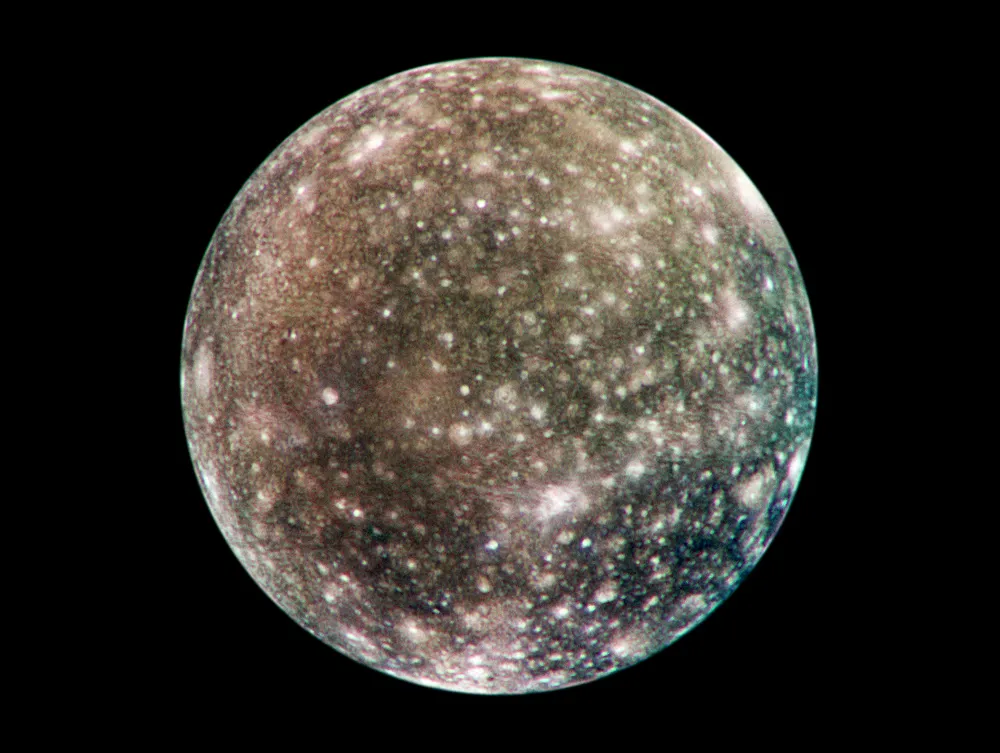
"We found salt- and carbon-rich water ice grains originating from a large reservoir of liquid water below the icy crust of Enceladus," says Dr Ralf Srama, astronomy professor at University of Stuttgart and lead scientist for the CDA.
The existence of subsurface oceans is exciting because of the potential significance to the question of whether suitable conditions for life might be found beyond Earth.
Scientists like Dr Frank Postberg, professor of planetary science at the Freie Universität Berlin, have been working with plume data from CDA to study conditions below Enceladus’s icy crust.
He says, "We found a variety of salts that tell us Enceladus’s subsurface ocean is a little less salty than Earth’s ocean, and is a ‘soda ocean’ with lots of dissolved carbonates and carbon dioxide, which also provide more alkaline waters than on Earth."
Promisingly, they also identified organics at Enceladus (which are needed for and can be created by life), phosphorus (which is essential for life as we know it) and minerals that indicate hydrothermal activity – a proposed mechanism for providing materials for chemical reactions and heat in the dark, subsurface world.
Edge of the Solar System
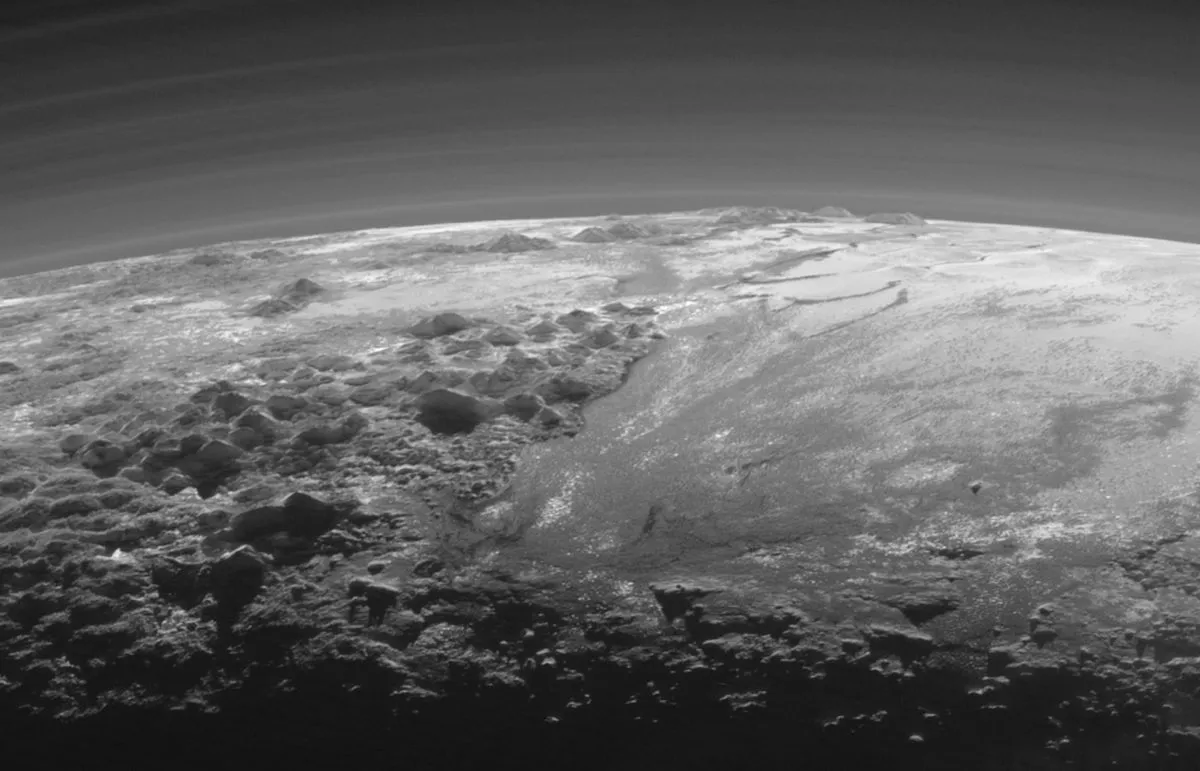
Although few spacecraft have ventured beyond Saturn, those that have revealed evidence of water ice on the moons of Uranus and Neptune, and on Kuiper Belt objects such as Pluto, which is thought
to be composed of up to 30% water ice.
Comets, which we observe from Earth as they traverse the space within our inner Solar System, can originate from the Kuiper Belt or the more distant Oort Cloud and are also laden with water ice.
Hundreds of thousands of such icy bodies may occupy the Kuiper Belt, while there may be hundreds of billions or even trillions of them in the Oort Cloud.
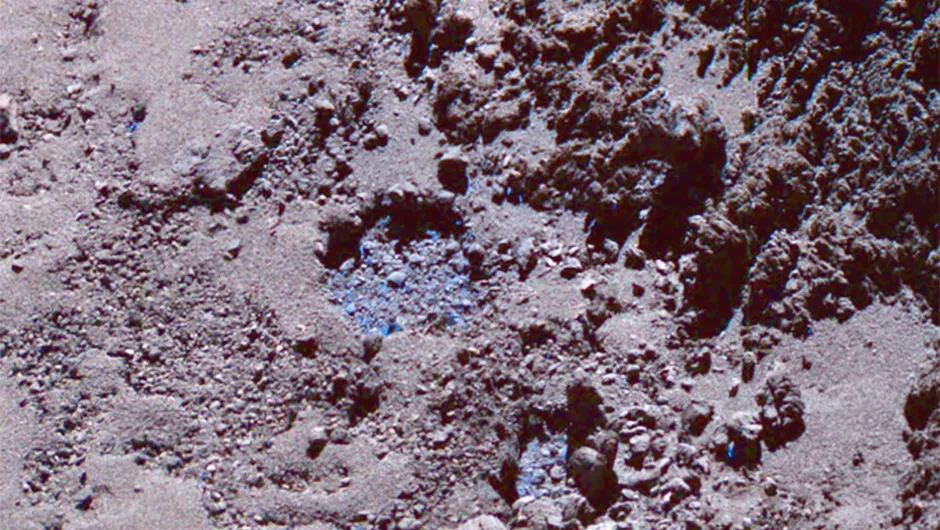
Water in various forms is abundant in our Solar System.
Observations of other nascent and established systems suggest that they, too, contain water.
If space exploration requires water to be present in the locations we wish to visit, it seems our possible destinations are endless.
This article appeared in the December 2023 issue of BBC Sky at Night Magazine.
